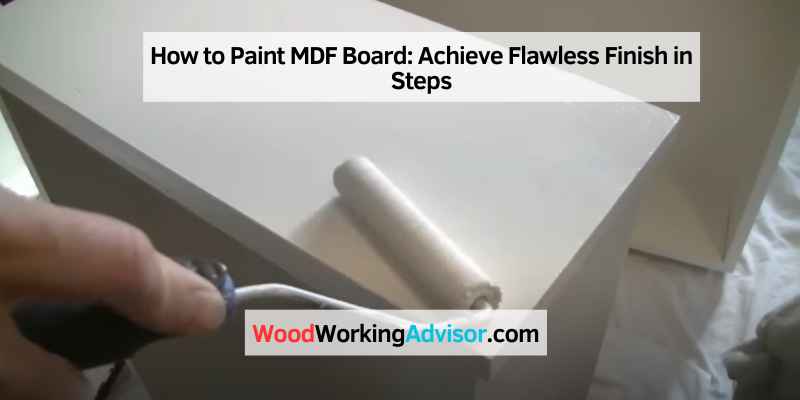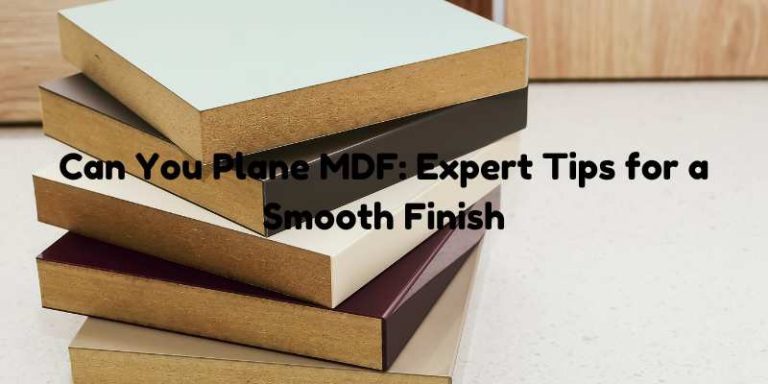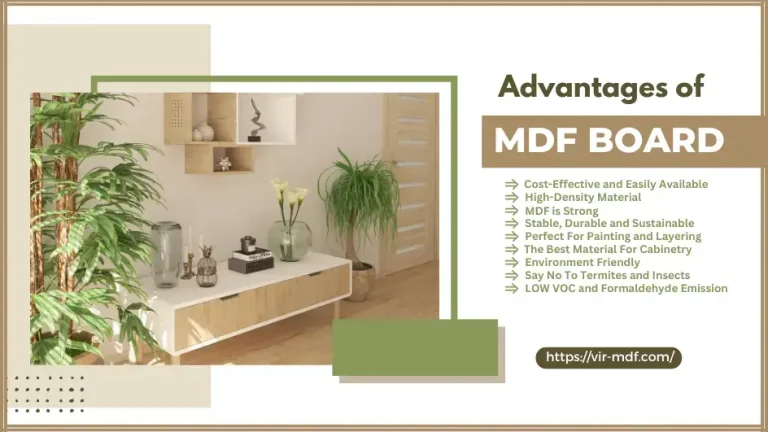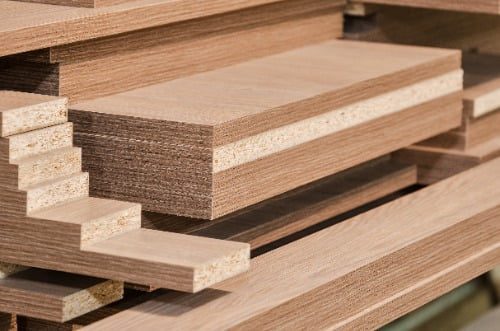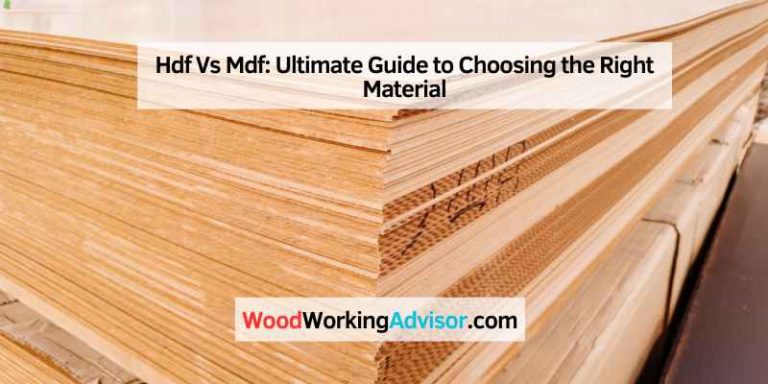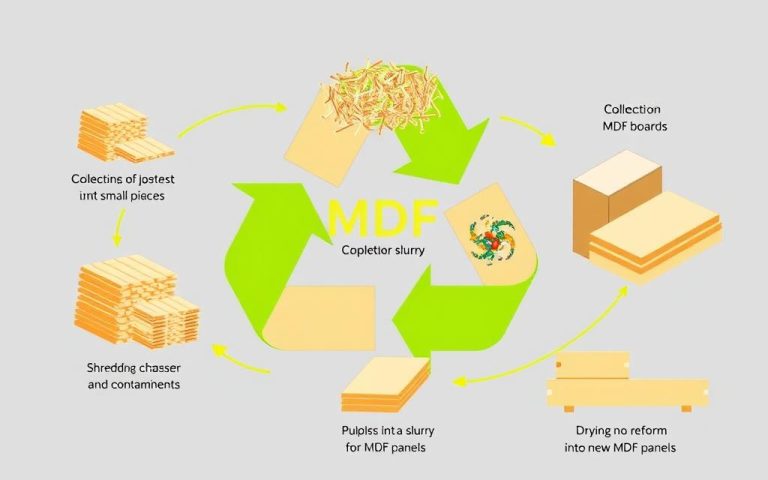How to Paint MDF Board: Achieve Flawless Finish in Steps
To paint MDF board, use oil-based or water-based paint for durability. Sand between coats and seal edges before painting.
Painting MDF requires proper preparation and choice of paint to ensure a smooth and long-lasting finish. MDF, or Medium Density Fiberboard, is a versatile material commonly used in furniture and cabinetry. By following the right steps and techniques, you can achieve professional-looking results when painting MDF.
Whether you are embarking on a DIY project or a larger commercial endeavor, understanding how to properly paint MDF will ensure your finished product looks polished and stands the test of time.
Preparation Is Key
For a flawless finish when painting MDF board, thorough preparation is essential. Begin by sanding the board to create a smooth surface, then apply a primer to help the paint adhere evenly. Finally, use high-quality paint and take your time to achieve professional-looking results.
Choosing The Right Paint
When it comes to painting MDF board, choosing the right paint is crucial for achieving a professional and long-lasting finish. For MDF, both oil-based and water-based paints can be used, but oil-based paints are often preferred due to their high durability. Water-based paints are suitable for smaller DIY projects, while oil-based paints are recommended for larger residential and commercial purposes. The choice of paint will depend on the specific requirements of your project and the level of durability you desire.
Tools And Materials Needed
Before you begin painting MDF board, it’s essential to gather the necessary tools and materials. Here’s a list of items you’ll need:
- Paintbrush or roller
- Primer
- Sanding sealer
- Sandpaper (various grits)
- Tack cloth
- Drop cloth or plastic sheeting
- Paint tray
- Painter’s tape
- Face mask (to protect against fumes)
Having these tools and materials readily available will ensure a smooth and efficient painting process. Make sure to choose high-quality products to achieve the best results.
When it comes to painting MDF board, preparation is key to achieving a flawless finish. Properly preparing the surface before painting will ensure better adhesion and prevent paint from chipping or peeling over time. Here are the essential steps to prepare your MDF board:
- Clean the surface: Start by cleaning the MDF board with a mild detergent and water solution to remove any dirt, grease, or dust.
- Sand the surface: Next, sand the MDF board using sandpaper of various grits (start with a lower grit and gradually move to a higher grit) to smooth out any rough edges or imperfections. Sanding also helps the paint adhere better to the surface.
- Apply a sanding sealer: After sanding, apply a sanding sealer to the MDF board. This sealer helps seal the porous surface of the MDF and provides a smoother base for the paint to adhere to.
- Prime the surface: Once the sanding sealer has dried, apply a coat of primer to the MDF board. The primer helps to further seal the surface and improves the paint’s adhesion.
- Sand the primer: After the primer has dried, lightly sand the surface again to ensure a smooth and even finish.
- Clean the surface: Before applying the paint, make sure to clean the surface once more to remove any dust or debris.
By following these preparation steps, you’ll create a solid foundation for your paint job and ensure a professional-looking result. Remember, taking the time to properly prepare the MDF board will greatly enhance the longevity and overall appearance of your painted surface.
With the right paint, tools, and proper preparation, you’re now ready to start painting your MDF board. Stay tuned for our next blog post on the actual painting process, where we’ll share tips and techniques for achieving a flawless finish.
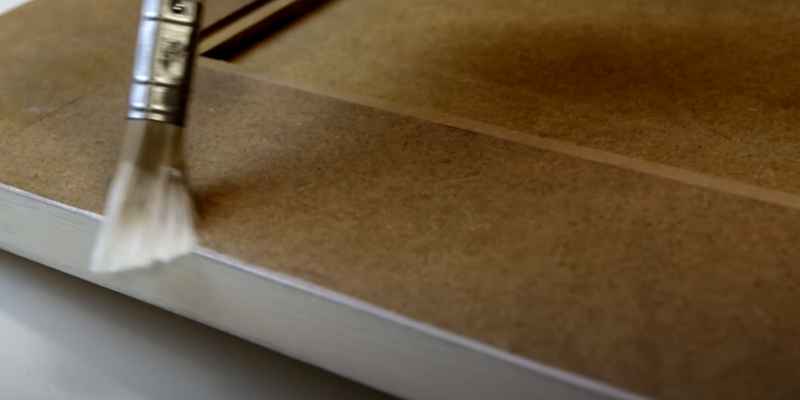
Initial Steps Before Painting
Before you begin painting your MDF board, it is important to follow a few initial steps to ensure a smooth and long-lasting finish. These steps include sanding the surface, sealing the edges, and applying primer. Let’s take a closer look at each of these steps:
Sanding The Surface
The first step in preparing your MDF board for painting is sanding the surface. This helps to smooth out any rough spots or imperfections on the board, allowing the paint to adhere better. Use a fine-grit sandpaper and gently sand the entire surface of the MDF board. Make sure to wipe away any dust or debris before moving on to the next step.
Sealing The Edges
Next, it is important to seal the edges of the MDF board to prevent the paint from seeping into the edges and causing them to swell. You can use a wood filler or an acrylic caulk to seal the edges. Apply a thin layer of the filler or caulk to the edges and smooth it out using a putty knife or your finger. Allow it to dry completely before proceeding.
Applying Primer
Once the surface is sanded and the edges are sealed, it’s time to apply a primer to the MDF board. Primer helps to create a smooth and even base for the paint to adhere to, as well as enhances the durability of the finished paint job. Choose a primer specifically designed for MDF surfaces and apply it evenly using a brush or a roller. Allow the primer to dry completely before moving on to the next step.
By following these initial steps of sanding the surface, sealing the edges, and applying primer, you are setting the foundation for a successful paint job on your MDF board. These steps ensure that the paint will adhere properly, resulting in a professional-looking finish that will stand the test of time.
Applying The First Coat
If you’re looking to paint MDF board, applying the first coat is a crucial step that can make or break the final result. Here are some techniques for a smooth application:
Techniques For A Smooth Application
- Use a high-quality brush or roller to apply the paint
- Start with a light coat to avoid drips or pooling
- Apply the paint in long, even strokes
- Work in small sections to ensure even coverage
- Use a paint conditioner to improve the flow of the paint
Drying Time Before Recoating
Before applying a second coat of paint, it’s important to let the first coat dry completely. The drying time can vary depending on the type of paint you use and the temperature and humidity of your environment. As a general rule, water-based paints usually dry within 1-2 hours, while oil-based paints can take up to 24 hours to dry. It’s always best to check the paint can for specific drying times.
By following these techniques and allowing the first coat to dry completely, you can ensure a smooth and professional-looking finish on your MDF board.
Achieving The Perfect Finish
When painting MDF board, achieving a flawless finish is essential to enhance the overall look of your project. Proper techniques such as sanding between coats and applying the final coat play a crucial role in ensuring a professional and polished outcome.
Sanding Between Coats
To achieve a smooth finish, sanding between coats is vital. Use fine-grit sandpaper to gently sand the surface after each coat has dried completely. This step helps to remove imperfections and create a uniform surface for the next coat of paint.
Applying The Final Coat
When applying the final coat of paint on MDF board, ensure even coverage by using long, smooth strokes. Avoid overloading the brush or roller to prevent drips and uneven application. Allow sufficient drying time between coats to achieve a professional finish.
Special Focus: Painting Edges
When painting MDF board, paying special attention to the edges is crucial for achieving a professional finish. Here’s how to ensure that the edges are painted flawlessly.
Tools For Edge Painting
Using the right tools is essential for achieving a smooth and even finish when painting the edges of MDF board. Here are some tools you’ll need:
- Quality paintbrush
- Painter’s tape
- Small foam roller
Ensuring Even Coverage
Ensuring that the edges receive the same level of coverage as the surface is key to achieving a professional result. Here’s how to ensure even coverage:
- Prep the edges: Sand the edges of the MDF board to ensure they are smooth and free from any rough patches.
- Apply primer: Use a small foam roller to apply a coat of primer to the edges, ensuring thorough coverage.
- Use quality paint: Choose a high-quality paint that is suitable for MDF surfaces to ensure even coverage and a durable finish.
- Apply paint carefully: Use a quality paintbrush to carefully apply the paint to the edges, ensuring no drips or uneven areas.
- Remove tape carefully: Once the paint is dry, carefully remove the painter’s tape to reveal clean, crisp edges.
Common Mistakes To Avoid
When painting MDF board, it’s important to avoid common mistakes such as skipping the sanding step, using the wrong type of paint, and neglecting to prime the surface. Proper preparation, including sanding and priming, is crucial for achieving a smooth and professional finish on MDF boards.
Using The Wrong Type Of Paint
Using water-based paints on MDF boards can lead to poor adhesion and a less durable finish. Oil-based paints are preferred for their high durability. It’s essential to choose the right type of paint to ensure a long-lasting and professional-looking finish.
Skipping Sanding Steps
Sanding is a crucial step in preparing MDF boards for painting. Skipping or inadequate sanding can result in an uneven finish and poor paint adhesion. Proper sanding not only smoothens the surface but also helps the paint adhere better, ensuring a flawless and long-lasting finish.
Advanced Tips For Professionals
Discover advanced tips for professionals on how to expertly paint MDF boards. Learn the best techniques for priming, applying paint, and achieving a flawless finish on MDF surfaces. Master the art of painting MDF for a professional look every time.
Spray Painting Mdf
Spray painting is an efficient method for coating MDF, providing a smooth and even finish. Prepare the MDF surface by sanding it with fine-grit sandpaper, then wipe it clean with a damp cloth. Choose a high-quality spray paint specifically designed for MDF, and apply thin, even coats to avoid drips or runs. Work in a well-ventilated area, and use a mask to protect yourself from inhaling paint particles. Allow each coat to dry thoroughly before applying the next for a professional result.
Creating A High-gloss Finish
To achieve a high-gloss finish on MDF, meticulous preparation is crucial. Start by applying a high-quality primer designed for MDF, then sand the surface to a smooth finish. Use a spray gun or foam roller to apply the paint, working in thin, even layers to prevent drips. After the paint has fully dried, sand the surface again with fine-grit sandpaper and apply a clear topcoat to enhance the gloss and provide protection. This meticulous process will result in a stunning high-gloss finish that is sure to impress.
Maintenance And Care
Proper maintenance and care are crucial for preserving the beauty and longevity of painted MDF boards. By following simple cleaning and touch-up techniques, you can ensure that your painted MDF boards remain in pristine condition for years to come.
Cleaning Painted Mdf
Regular cleaning is essential to keep painted MDF boards looking their best. Here’s a simple guide to cleaning painted MDF:
- Use a soft, damp cloth to gently wipe the surface of the painted MDF board.
- If there are stubborn stains, mix a mild detergent with water and use a soft cloth to spot clean the affected areas.
- Ensure that the board is completely dry after cleaning to prevent any moisture-related damage.
Touching Up Scratches And Dings
Even with the utmost care, scratches and dings may occur on painted MDF boards over time. Here’s how you can touch up these imperfections:
- Lightly sand the affected area to smooth out any rough edges.
- Apply a small amount of matching paint to the scratched or dinged area using a fine brush or cotton swab.
- Allow the touch-up paint to dry completely before assessing if an additional coat is needed.

Frequently Asked Questions
What Type Of Paint Do You Use On Mdf?
For painting MDF, both oil-based and water-based paints can be used. However, oil-based paints are preferred for their high durability. Water-based paints are suitable for small DIY projects, while oil-based paints are better for larger residential and commercial purposes. It’s important to sand the board in between coats to prevent paint from flaking off at the corners.
Before painting, seal the edges of the MDF board for a smoother and even finish.
Can You Paint Straight Onto Mdf?
Yes, you can paint straight onto MDF. It is recommended to sand the board in between coats and seal the edges for a smooth finish. Use oil-based paints for durability or water-based paints for small DIY projects.
Do I Need To Sand Mdf Board Before Painting?
Yes, it is recommended to sand MDF board before painting. Sanding helps to smoothen the surface and create a better adhesion for the paint. It also helps to remove any imperfections or rough areas on the board.
How Do You Start Painting On Mdf Board?
To start painting on MDF board, it is important to sand the board in between coats to prevent paint from flaking off at the corners. Seal the MDF board’s edges so they are smooth and will take paint evenly. You can use both oil-based and water-based paints, but oil-based paints are preferred for their high durability.
Apply paint to the MDF by rolling, brushing, or spraying, and allow for about an hour between recoats. Recoat two or three times, if needed.
Conclusion
Painting MDF boards requires proper sanding, priming, and painting techniques for a smooth finish. Choose the right paint type and apply multiple coats for durability. Remember to seal the edges and follow the necessary steps to ensure a professional-looking result.
Painting MDF can be a rewarding DIY project.

